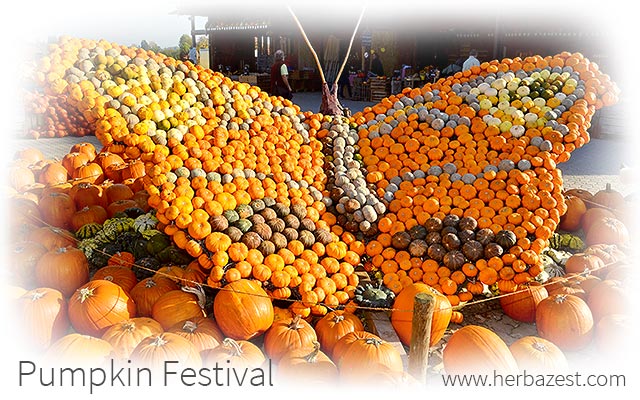Each fall, in anticipation of Halloween, thousands of visitors flock to pumpkin patches and festivals to enjoy the endless possibilities the pumpkin has to offer. Usually occurring at the end of September and during October, pumpkin events are more than just a fun way to spend a weekend.
History of the Pumpkin Festival
The exact origins of the first pumpkin festival have been lost in time, but many scholars point to the Celtic celebration of Samhain as an important precursor to modern-day pumpkin events.
Celebrated every year on the eve of November 1st, the tradition began over 2,000 years ago as a way to commemorate the end of the harvest season and the beginning of a new year. Before pumpkins were introduced in Europe, one tradition included carving and scooping out gourds and fashioning lanterns out of them, which were believed to drive out darkness and malignant spirits.
Upon their arrival in the New World, 19th century Irish and Scottish immigrants discovered that pumpkins, larger and more widely available, made better lanterns than the turnips and small gourds of Europe. Over time, Europeans began to associate pumpkin with the poor working class. Largely ignored in cookbooks, it became a minor crop.
Pumpkin Festivals Across North America
Pumpkins witnessed a resurgence in popularity after the Second World War, when the boomer generation placed higher demands on the market for jack-o'-lanterns. This period would also mark the emergence of small pumpkin festivals all over the U.S. and Canada.
In many North American cities, pumpkin festivals began as strategically-orchestrated events put on by local farmers and merchants and supported by a community of enthusiastic volunteers. They bring prosperity to small towns, allowing communities to improve facilities and infrastructure for their residents.
What to Do at a Pumpkin Festival
Pumpkin festivals are important events; in some towns, hundreds of fun family activities are spread out over several days or weeks. Here is a list of some of the exciting things to do at a pumpkin festival.
Pick a pumpkin. Festivals are excellent places for farmers and vendors to showcase their locally-grown pumpkins. A variety of sizes, colors, and shapes will be available for the choosing.
Buy pumpkin seeds. Pumpkin enthusiasts can become inspired to grow their very own pumpkin plants. In this case, a variety of seeds can be purchased.
Participate in a pie-eating contest. This is an unparalleled opportunity to savor as many pumpkin pies as possible, fusing Epicureanism with a deliciously competitive spirit.
Sample artisanal food and drink. Any local pumpkin festival offers a variety of foods and beverages, including stews, soups, fries, chips, donuts, pastries, and craft beer.
Pumpkin festivals provide a diverse selection of wholesome activities the entire family can enjoy, such as face painting, crafts, live music, storytelling, games, parades, contests, and fireworks.
Biggest Pumpkin Festivals in North America
Nearly 90% of all processed pumpkin in the U.S. comes from Morton, Illinois - affectionately nicknamed the Pumpkin Capital of the World. Though estimates vary, Morton's pumpkin fest is one of the largest in North America, and welcomes a staggering 70,000 visitors annually. Meanwhile, spread out over two days, the Port Elgin pumpkin fest in Ontario attracts over 60,000 visitors.
Additional pumpkin events held in Keene, New Hampshire; Circleville, Ohio; and Sycamore, Illinois are also notable. Annual pumpkin festivals have steadily grown since the 1950s and have found a place in the hearts of millions of people all over the nation.
They have allowed rural communities to experience growth and prosperity while simultaneously maintaining a sense of small-town pride and tradition.
Sources
- Morton Chamber of Commerce, Morton Pumpkin Festival
- Pumpkin: The Curious History of an American Icon, pp. 166 – 178
- Sycamore, pp. 121-122
- The Colonial Williamsburg Foundation, Some Pumpkins! Halloween and pumpkins in colonial America
- University of Illinois, Extension, Pumpkins and More




